
 |
|
Columbia ISA Audio – Video • ALL TV 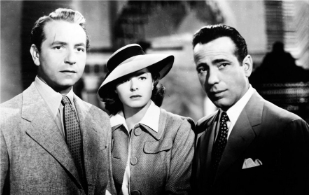 TV of the Past • Component Connection Diagrams TV of the PAST
The basic ideas for TV and the start of the actual implementation happened around 1927 when radio was the dominant platform for news, entertainment and communication. Since then, TV has expanded and the technology has improved year after year. In 1938, about ten years after invention, the first commercial TV sets were being made available. In 1941 the first TV ad was broadcast. Until 1947, only a few thousand TV sets were being used by Americans. In 1954 the first color TV sets were sold. All TV sets up until then were black and white. Very few people owned color TV sets up until 1965. In 1955 the first TV remote control was made available. By the mid 1960s more Americans were getting their news from TV than from newspapers. In 1947, President Harry Truman's state of the union address and the baseball World Series were televised. A year later, CBS and NBC networks started 15-minute nightly newscasts. In the late 1940s there were 98 commercial television stations in 50 large cities. By 1949, Americans were buying 100,000 TV sets every week. The 1940s TVs had screens between 10 and 15 inches wide diagonally, inside large heavy cabinets and were black and white, no color. Color broadcasts and sets didn't arrive until 1954. What TV broadcasts were aired in the 1940s? Howdy Doody – A pioneer in children’s programming, this NBC classic starred Buffalo Bob Smith and his puppet Howdy Doody. Plenty of other puppets appeared on the show, which began its run in 1947 and ended in 1960. 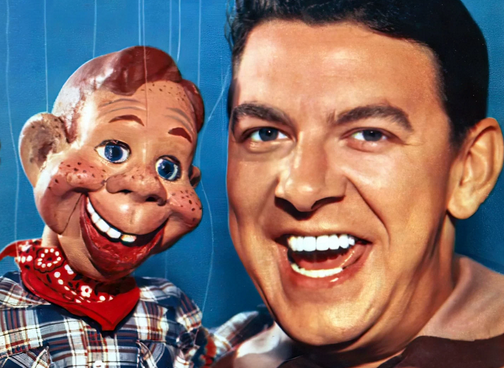
The Lone Ranger – One of ABC’s first hits, one of the network’s most popular shows from 1949 to 1957, and arguably one of the most famous TV series ever. It starred Clayton Moore as the Lone Ranger and Jay Silverheels as Tonto, his sidekick.  Meet the Press – The longest-running television show of all time kicked off in 1947. Basically a half-hour press conference with one important political guest and a panel of questioners. 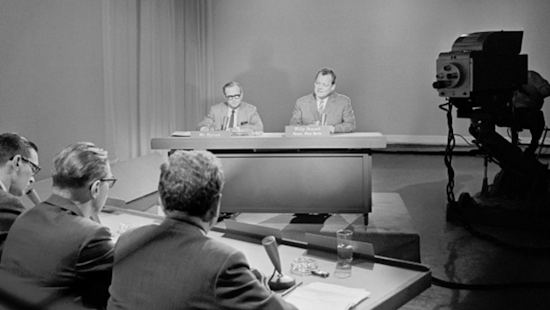 Texaco Star Theater – This classic NBC variety show ran from 1948 to 1956. It was hosted by Milton Berle—“America’s favorite uncle” and one of the biggest stars of the era—and also starred Sid Stone and Jimmy Nelson. It’s known as one of the most popular television shows in American broadcasting history. The Toast of the Town Starting in 1948, this is undoubtedly the best-known TV variety show of all time. Better known as The Ed Sullivan Show, which it was renamed in 1955, the program introduced America to so many entertainment stars, including that famous moment on February 9, 1964, when The Beatles made their U.S. debut on the program. Until 1964 there were only 12 TV channels, on VHF only, in most TV sets. Since 1952 a few local UHF TV stations were licensed but few survived. Most homes only had 3 channels maximum (CBS, NBC and ABC). UHF channels 14-83 had to be included in TV sets tuners from 1964 and beyond. The Golden Age of Television 1950s Dragnet 1952-1970 | NBC Dragnet is a radio and television crime drama about the cases of Los Angeles police detective, Sergeant Joe Friday, and his partners. The show takes its name from an actual police term, a "dragnet", meaning a system of coordinated measures for apprehending criminals or suspects. Jack Webb as Sgt. Joe Friday Harry Morgan as Officer Bill Gannon 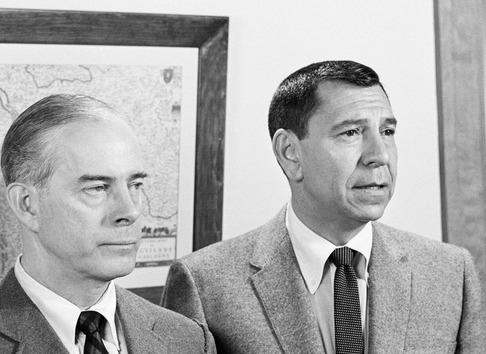 Gunsmoke 1955-1975 | CBS Gunsmoke is a western drama series starring James Arness that took place in and around Dodge City, Kansas, during the settlement of the American West. The show ran for 20 seasons from 1955 to 1975 on CBS, and stands as the longest-running prime time, live-action drama with 635 episodes. Matt Dillon (played by James Arness), a U.S. marshal charged with maintaining law and order in an American frontier town. The supporting characters included Miss Kitty Russell (Amanda Blake), owner of the Long Branch Saloon, Doc Adams (Milburn Stone), the town’s adept physician and Deputy Marshal Chester Goode (Dennis Weaver), Dillon’s loyal sidekick. When Weaver left the show in 1964, his character was replaced by Festus Haggen (Ken Curtis). Much of the series featured Dillon and his allies battling bandits, robbers, or other threats that blew in from the prairie.  Father Knows Best Adventures of Superman I Love Lucy Alfred Hitchcock Presents Leave it to Beaver Light comedy drama of two brothers and parents of the 1950s. Ran for 234 episodes. The series had its debut on CBS on October 4, 1957. The following season, it moved to ABC, where it stayed until completing its run on June 20, 1963. Throughout the show's run, it was shot with a single camera on black-and-white 35 mm film. Hugh Beaumont as Ward Cleaver Barbara Billingsley as June Cleaver Tony Dow as Wallace "Wally" Cleaver Jerry Mathers as Theodore "Beaver" Cleaver The Rifleman First episode date: September 30, 1958 Final episode date: April 8, 1963 The Rifleman is a popular American Western TV program starring Chuck Connors as rancher Lucas McCain and Johnny Crawford as his son Mark McCain. It was set in the 1880s in the fictional town of North Fork, New Mexico Territory. The show was filmed in black and white, in half-hour episodes. The Rifleman aired on ABC. 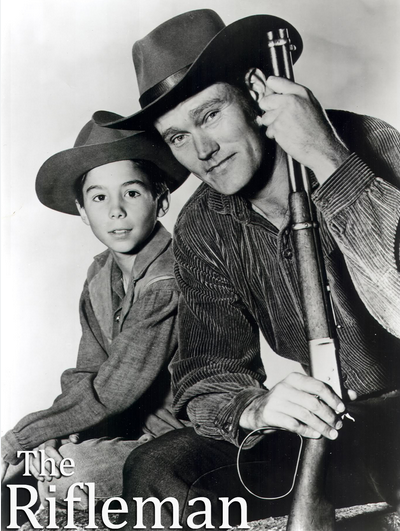 Perry Mason Legal drama. Los Angeles defense attorney Perry Mason defends dozens of falsely accused people over the course of this long-running courtroom drama, and he manages to clear each and every one of them, usually by drawing out the real criminal on the witness stand. He is assisted by investigator Paul Drake and secretary Della Street, and is a continual thorn in the side of District Attorney Hamilton Burger. First episode date: September 21, 1957 until May 22, 1966. Network: CBS Raymond Burr; Barbara Hale; William Hopper; William Talman; Ray Collins  The Twilight Zone October 1959 to June 1964 on CBS, Rod Serling narration and writing. Unusual events with a lesson in human behavior often with an odd twist at the end of the story. Thought provoking stories about science fiction, suspense and the supernatural. The opening dialog was often Rod Serling setting the tone for the episodes. "There is a fifth dimension, beyond that which is known to man. It is a dimension as vast as space and as timeless as infinity. It is the middle ground between light and shadow, between science and superstition, and it lies between the pit of man's fears and the summit of his knowledge. This is the dimension of imagination. It is an area which we call The Twilight Zone."  On November 30th, 1956, the first broadcast use of videotape took place at CBS Television City in Hollywood. “Douglas Edwards with the News” was the first “tape delay” to the west coast of the United States. The program was broadcast live to the eastern U.S. from New York. At the same time, it was fed to Los Angeles where it was recorded on videotape and played back exactly three hours later. The VCR (video cassette recorder) was very popular in the mid-1970s as this device gave people a way to watch TV on their own schedule rather than being forced to watch a live TV broadcast on the schedule of the TV station. VHS tapes were recorded by people of their activities on a mobile camera or camcorder and soon, pre-recorded tapes of movies were being sold or rented. VCRs were everywhere up until the early 2000s when they peaked. 25 years is very good for a technology to last as today things change much faster. Even with the new flat screen TV, old VHS tapes are being viewed. • Easy HDTV Hookup Guide • HDTV Screen Size • 4K TV 4K TV Columbia ISA Audio/Video Contact: columbiaisa@yahoo.com |